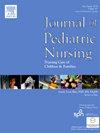探讨小丑干预对住院儿童的影响:范围回顾
IF 2.3
4区 医学
Q2 NURSING
Journal of Pediatric Nursing-Nursing Care of Children & Families
Pub Date : 2025-07-18
DOI:10.1016/j.pedn.2025.07.002
引用次数: 0
摘要
各种研究已经证明小丑疗法在改善住院儿童情绪状态方面的有效性。然而,小丑治疗的细节和评估指标尚不清楚。因此,有必要探索小丑干预。目的识别和绘制关于住院儿童小丑治疗的证据。方法乔安娜布里格斯研究所的范围审查方法和PRISMA范围审查扩展指导工作。使用了7个数据库:PubMed、Embase、Web of Science、EBSCO、CINAHL、Cochrane Library和OVID。本研究检索了2000年1月至2025年4月关于小丑干预住院儿童的英文同行评议文章数据库。数据由一位作者提取,另一位作者检查,并进行描述性分析。结果33篇符合标准。大多数研究都集中在欧洲和亚洲地区,并在一对一的基础上进行。许多研究并没有报告小丑表演的个人资质。所选择的评价干预效果的结果指标相对均匀。结论小丑干预减少了负面情绪,但具体措施和潜在的不良反应有待进一步研究。本研究详细介绍了研究人员如何进行小丑护理,并在实践中制定了干预措施。在未来,在医院环境中使用小丑干预对于促进儿童及其家人适应住院环境,积极治疗和从疾病中康复至关重要。本文章由计算机程序翻译,如有差异,请以英文原文为准。
Exploring the impact of clown intervention on hospitalized children: A scoping review
Introduction
Various studies have demonstrated the effectiveness of clown therapy in improving the emotional state of hospitalized children. However, the specifics of clown therapy and the indicators of assessment are unclear. So it is necessary to explore clown interventions.
Aim
Identify and map evidence regarding clown therapy for hospitalized children.
Methods
The Joanna Briggs Institute scoping review method and the PRISMA extension for Scoping Reviews guided the work. Seven databases were used: PubMed, Embase, Web of Science, EBSCO, CINAHL, the Cochrane Library, and OVID. This study searched databases for English peer-reviewed articles on clown interventions for hospitalized children from January 2000 to April 2025. Data were extracted by one author and checked by another and analyzed descriptively.
Results
Thirty-three articles met the established criteria. Most of the research has been focused on the European and Asian regions and has been carried out on a one-to-one basis. Many studies did not report on the qualifications of the individuals performing as clowns. The outcome indicators chosen for evaluating the effectiveness of the intervention were relatively homogeneous.
Conclusion
Clown interventions reduce negative emotions, but specifics and potential adverse effects need further research.
Implication
This study details how researchers conducted clown care and developed pathways for interventions in practice. In the future, the use of clowning interventions in the hospital setting will be critical in facilitating the acclimatization of the child and his/her family to the inpatient setting, positive treatment, and recovery from illness.
求助全文
通过发布文献求助,成功后即可免费获取论文全文。
去求助
来源期刊

Journal of Pediatric Nursing-Nursing Care of Children & Families
NURSING-PEDIATRICS
CiteScore
3.70
自引率
8.30%
发文量
291
审稿时长
65 days
期刊介绍:
Official Journal of the Society of Pediatric Nurses and the Pediatric Endocrinology Nursing Society (PENS)
The Journal of Pediatric Nursing: Nursing Care of Children and Families (JPN) is interested in publishing evidence-based practice, quality improvement, theory, and research papers on a variety of topics from US and international authors. JPN is the official journal of the Society of Pediatric Nurses and the Pediatric Endocrinology Nursing Society. Cecily L. Betz, PhD, RN, FAAN is the Founder and Editor in Chief.
Journal content covers the life span from birth to adolescence. Submissions should be pertinent to the nursing care needs of healthy and ill infants, children, and adolescents, addressing their biopsychosocial needs. JPN also features the following regular columns for which authors may submit brief papers: Hot Topics and Technology.
 求助内容:
求助内容: 应助结果提醒方式:
应助结果提醒方式:


